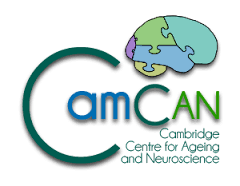CBSU bibliography search
To request a reprint of a CBSU publication, please
click here to send us an email (reprints may not be available for all publications)
Domain general frontoparietal regions show modalitydependent coding of auditory and visual rules
Authors:
JACKSON, J., Rich, A., Moerel, D., Teichman, L., DUNCAN, J., WOOLGAR, A.
Reference:
Imaging Neuroscience
Year of publication:
In Press
CBU number:
9144
Abstract:
A defining feature of human cognition is our ability to respond flexibly to what we see and
hear, changing how we respond depending on our current goals. In fact, we can rapidly
associate almost any input stimulus with any arbitrary behavioural response. This remarkable
ability is thought to depend on a frontoparietal “multiple demand” circuit which is engaged
by many types of cognitive demand and widely referred to as domain general. However, it is
not clear how responses to multiple input modalities are structured within this system.
Domain generality could be achieved by holding information in an abstract form that
generalises over input modality, or in a modality-tagged form, which uses similar resources
but produces unique codes to represent the information in each modality. We used a stimulusresponse task, with conceptually identical rules in two sensory modalities (visual and
auditory), to distinguish between these possibilities. Multivariate decoding of functional
magnetic resonance imaging data showed that representations of visual and auditory rules
recruited overlapping neural resources but were expressed in modality-tagged nongeneralisable neural codes. Our data suggest that this frontoparietal system may draw on the
same or similar resources to solve multiple tasks, but does not create modality-general
representations of task rules, even when those rules are conceptually identical between
domains.
The ethical approval for this study does not allow us to share raw data openly. Source
data for main report Figs. 2-5 and supplementary Figs. 1-3 is available on Open Science
Framework (OSF) (osf.io/hcpku) and in the zip file above. Template regions of interest and the code used to analyse
the current study are publicly available on OSF (osf.io/hcpku).
Data for this project is available at:
osf.io/hcpku

 MRC Cognition and Brain Sciences Unit
MRC Cognition and Brain Sciences Unit

